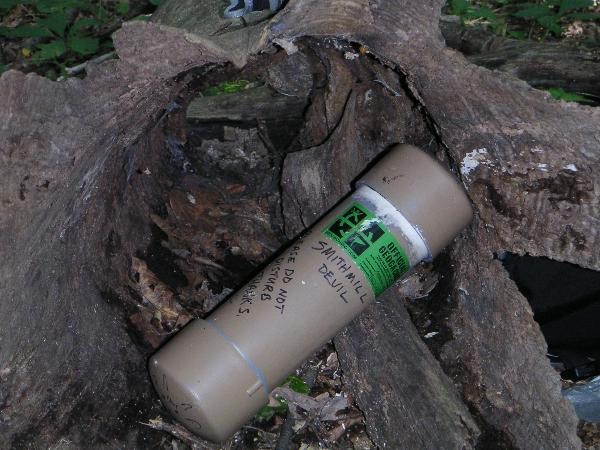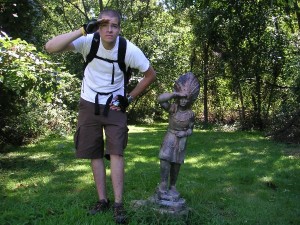Most of you are probably familiar with Geocaching (pronounced ‘geo-cashing’) one way or another. In it’s simplest form, Geocaching is a ‘treasure hunt’ where users with GPS devices find hidden containers (called caches) and log their visit.
Sometimes there are even items in the caches to trade. It’s honestly just a great excuse to get off the couch and explore the great outdoors.
Photo: Geocaching Ready – circa 2004
My Geocaching ‘career’ started in high school. I picked up a Garmin Geko 101 from Radio Shack and while it was super entry level and didn’t have any bells or whistles, it did everything you need it to do for Geocaching; Just input the GPS coordinates and go!
Now I use my iPhone as my primary Geocaching tool. I can search for caches based on my location, find and photograph them, and log my visit all from that one device. The official app only costs $10 and is a great way to get introduced to the hobby. If you get serious about it, you may want to add a better GPS device to your kit.
Caches range from the super easy where you just drive up in you car, to the all day multiple caches that require you finding them in order and frequently involve stream crossings and rough terrain.
Getting Started
- Make an account on Geocaching.com
- Buy or borrow a handheld GPS or purchase the iPhone app.
- Find caches nearby and go!
It’s really that easy!
What to Bring With You
- Pen or pencil
- For logging your visit or taking notes. Not all caches have a writing tool with them.
- Scrap paper or notebook
- A cache may be flooded so you can replace the log with a new one or you may just want to leave a message.
- Flashlight
- Even though it may be sunny, you might need to search dark spaces.
- Multi-tool or small tool kit
- You’d be surprised at how many times a set of long tweezers has come in handy.
- Any collectibles to exchange
- If you take something from the cache, be sure to leave something of equal or greater value.
- Bug spray
- Camera
- Notes of the cache you are hunting for.
- You can print them from the site before you go out. Some cachers keep a 3 ring binder to organize the caches and notes.
Types of Caches
There are over 10 types of caches but the most common are the ‘traditional.’ The coordinates usually point to the exact location and they are either easy to find or involve just a little searching (no trivia).
- Multi-cache
- Mystery/Puzzle
- Letterbox Hybrid
- Locationless/Reverse
- Moving/Travelling
- Virtual
- Earthcache
- Webcam
- Event Cache
- Wherigo Cache
Terminology
There is practically a whole library of slang and abbreviations for Geocaching but here are the most common. Some of these may be posted on your log/report online or even on the cache notes itself.
- Muggle – Non geocacher
- BYOP – Bring your own pen/pencil (cache is too small to store one)
- DNF – Did not find.
- FTF – First to find
- TFTC – Thanks for the cache
- TN / LN / SL – Took Nothing, Left Nothing, Signed Log
Mindset
When I started Geocaching, I noticed something changing. I was looking at things differently, often wondering if it would make a good hiding place. While you usually have the coordinates for the cache, it’s not always in that exact spot. You have to start changing your mindset.
I’m not the only one that now sees things differently because of Geocaching though. Sergeant Kent “Doc” Byrd, a member of an EOD unit in the Army, says his skills in Geocaching help keep him safe while on duty.
Oh and if you’re feeling particularly adventurous… you’ll notice that some caches are much harder to reach than others. Like the one you’ll need to SCUBA dive to or the one on the International Space Station. Good luck!
Are you a Geocacher already? If so, friend us up here on Geocaching.com! You have to have an account to view that page or you can search for us under the username ‘ITS Tactical‘. Happy hunting!

